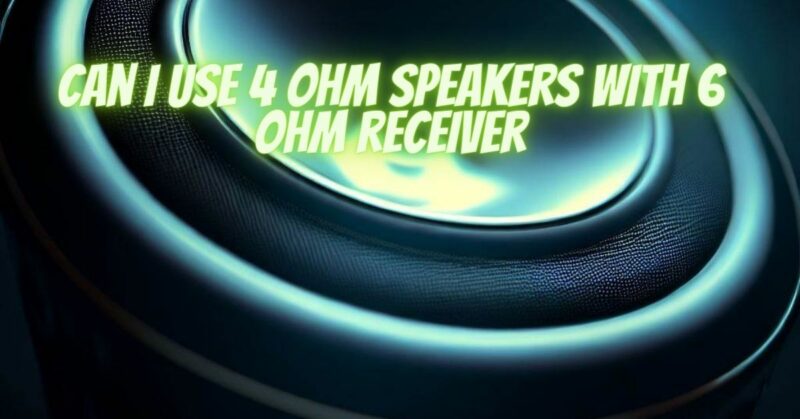The world of audio equipment is a realm of interconnections, where components work in harmony to create a sonic experience. When considering speakers with differing impedance levels, questions about compatibility and potential outcomes arise. In this article, we’ll delve into the topic of using 4 ohm speakers with a 6 ohm receiver, exploring the implications, benefits, and considerations of this pairing.
Understanding Impedance in Audio
Impedance, measured in ohms (Ω), is the resistance that an electrical circuit presents to the flow of alternating current. It’s a crucial factor in audio systems, especially when connecting speakers to amplifiers or receivers. While matching impedance is generally recommended, certain scenarios allow for mixing different impedance components.
Using 4 Ohm Speakers with a 6 Ohm Receiver
When contemplating the use of 4 ohm speakers with a 6 ohm receiver, consider the following factors:
- Amplifier/Receiver Tolerance: Many modern receivers are designed to accommodate a range of impedance loads. A 6 ohm receiver might be capable of handling speakers with impedance slightly lower than 6 ohms, such as 4 ohms.
- Power Distribution: Lower impedance speakers (like 4 ohms) draw more current from the receiver. If the receiver can supply the additional current demanded by the speakers, it can potentially drive them effectively.
- Amplifier Design: Some receivers incorporate circuitry that adapts to different impedance loads. Refer to the receiver’s specifications to determine its compatibility with 4 ohm speakers.
Advantages and Considerations
Using 4 ohm speakers with a 6 ohm receiver offers both advantages and considerations:
Advantages:
- Enhanced Power Output: Depending on the receiver’s design, using 4 ohm speakers might result in slightly increased power output. This can lead to higher volume levels and improved dynamic response.
- Potential for Improved Bass: Lower impedance speakers can demand more current, potentially leading to improved low-frequency response and impactful bass reproduction.
Considerations:
- Receiver Strain: While some receivers can handle lower impedance loads, using speakers with lower impedance than recommended might stress the receiver. Monitor the receiver’s temperature during operation.
- Distortion Risk: An impedance mismatch can potentially result in increased distortion, particularly at higher volumes. This can negatively impact sound quality.
- Speaker Safety: Prolonged operation with impedance mismatches can potentially damage the speakers if the receiver clips or distorts the signal. Protecting your speakers is crucial.
Optimizing the Setup
To optimize the performance of 4 ohm speakers with a 6 ohm receiver, follow these steps:
- Review Receiver Specifications: Examine the receiver’s manual or specifications to understand its tolerance for impedance mismatches and its recommended operating conditions.
- Monitor Receiver Temperature: Keep an eye on the receiver’s temperature during operation. If it becomes excessively hot, it might be a sign of strain or overload.
- Use Caution with Volume: Avoid pushing the receiver to its maximum volume for extended periods. Responsible volume management can help prevent strain and distortion.
- Evaluate Sound Quality: Listen attentively to the sound quality produced by the setup. If you notice distortion, imbalance, or any negative changes, consider adjusting the combination.
Using 4 ohm speakers with a 6 ohm receiver requires careful consideration of both the receiver’s specifications and potential implications. While some receivers can accommodate impedance mismatches, it’s essential to monitor the setup’s performance to ensure that both the receiver and the speakers operate within safe limits. By understanding compatibility factors and being vigilant about performance, you can create a setup that optimally leverages the strengths of both components, delivering sound quality that resonates with precision and impact.


